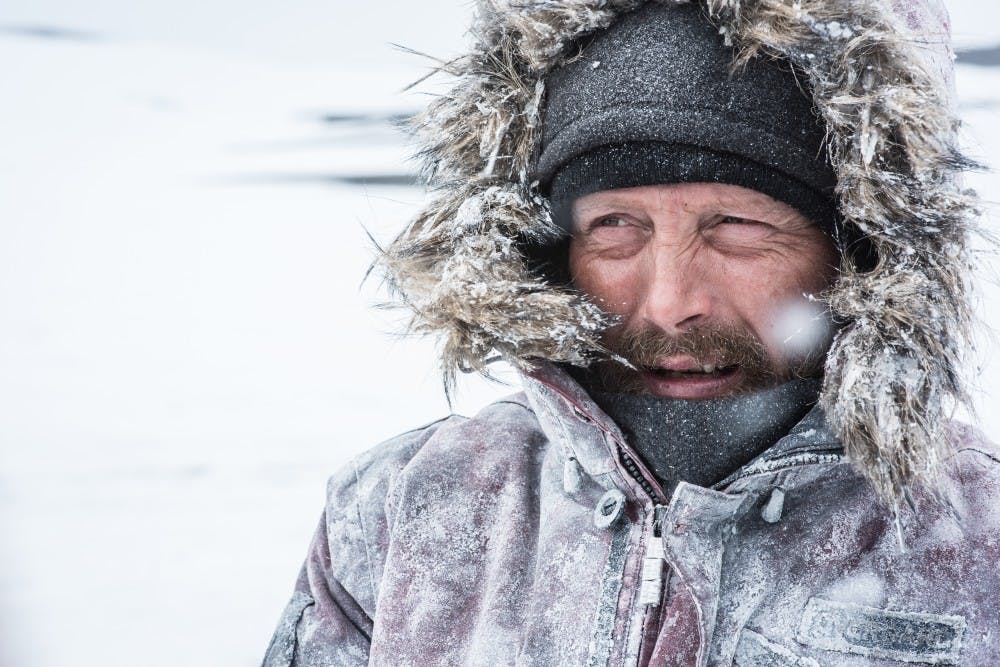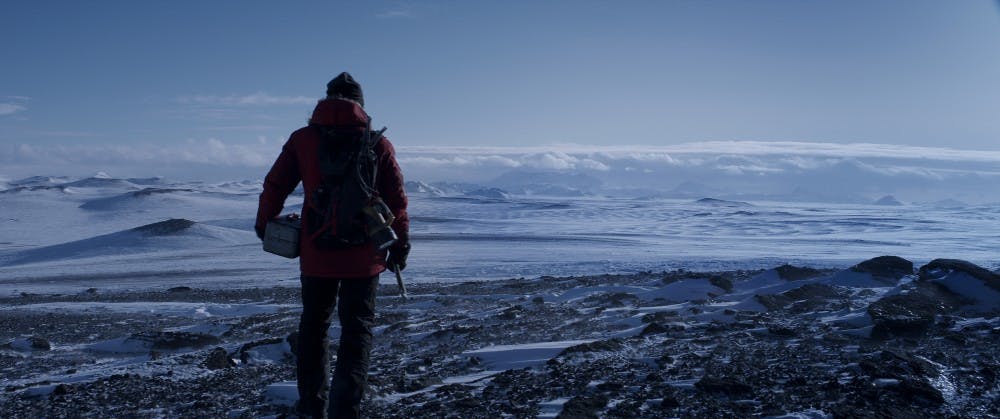Survival movies: you get it. Man vs. wild, life vs. death. Setting? Somewhere excessively cold/wet/hot. Arctic is a survival movie with all the typical elements, but the execution of it all pushes it beyond the rest.
Mads Mikkelsen almost exclusively stars in Arctic as Overgård, a Dutch pilot stranded in Iceland after a plane crash. In Arctic, isolation reigns supreme: the film spends a lengthy amount of time with quiet, contemplative shots of vast skies and white mountains, and with Overgård himself alone, just a speck on the screen. Although his solitary day–to–day life (or slow, impending death) is initially observed, Overgård is eventually disturbed by the appearance of an unnamed Thai woman (Maria Thelma Smáradóttir), who is heavily injured in a helicopter crash. When another human being is added to the icy landscape, both Arctic and Overgård come to life.
Arctic tells a quiet, stripped–down story. Overgård has no obvious background or motivations to survive, and as a whole, doesn’t have very many lines, but neither does the injured woman. The film relies on nonverbal bonds between the two characters, as well as between Overgård and the viewer, to push a stark narrative. As the audience sees Overgård hesitate to kill a fish and go out of his way to help a stranger, Mikkelson gives a reflective performance that shows the necessity and importance of living, breathing connection.

Mikkelsen’s performance as Overgård is nothing short of glorious. Not only does his perfectly somber face get organically ruddier and more beat–up as the film progresses, but his verbal contributions to Arctic, in both joyous and bitter yells, make the final push of the film devastatingly horrible to watch. Mikkelsen lost 15 pounds and worked through a flu while shooting for the film, and the physical toll he suffered while filming Arctic, while unpleasant to acknowledge, certainly enhances the effect of the many close–ups of Mikkelsen’s freezing face on the big screen.
Given how quietly Arctic presents itself to the viewer, it is difficult to put a satisfactory review of the film in words. Arctic can be better described as an experience than a film, meant to make you feel rather than meant to please you. It’s worth a watch, even if you walk out of the theater more anxious than you walked in.
Arctic is showing at Landmark’s Ritz Five through the end of February.

